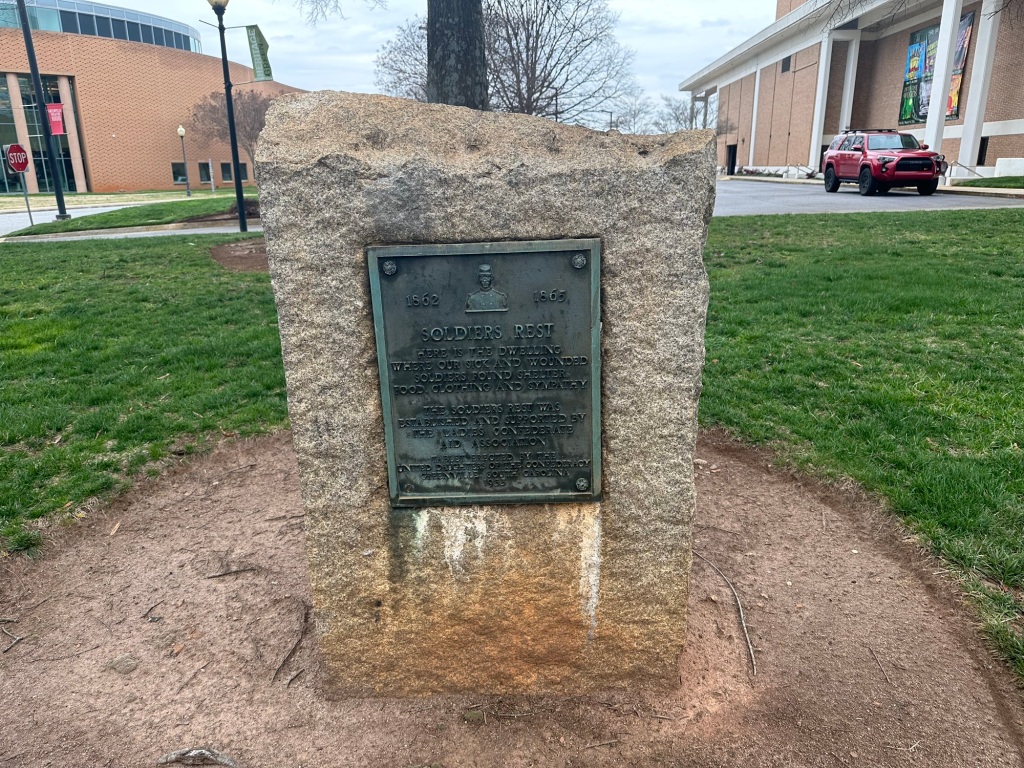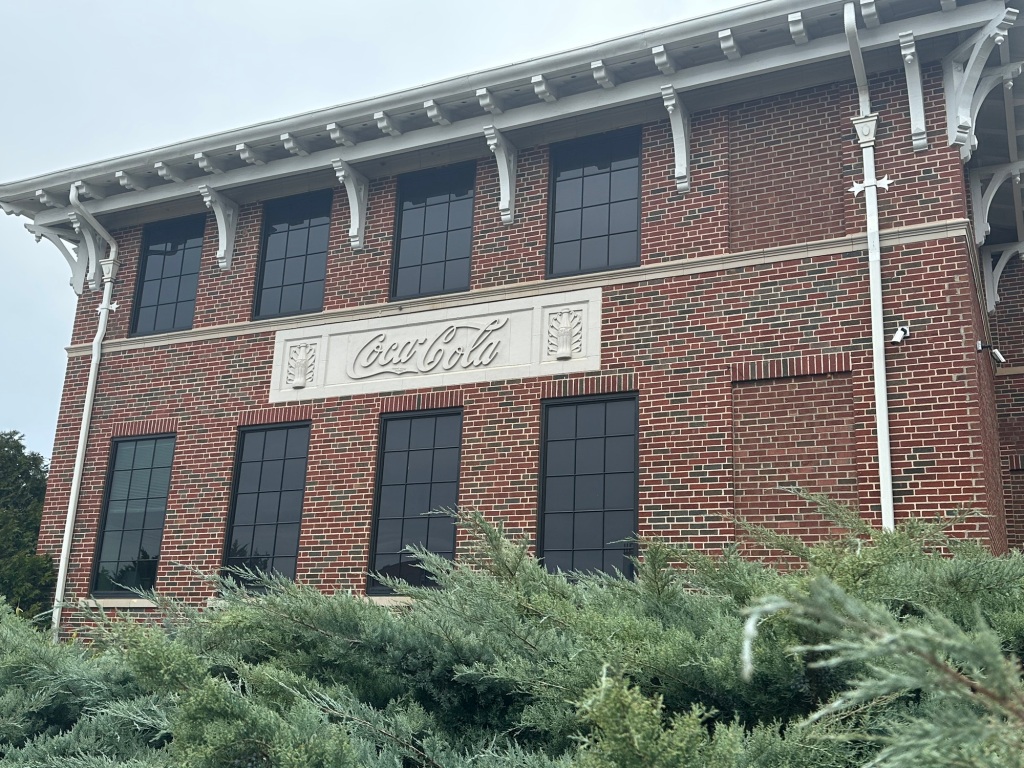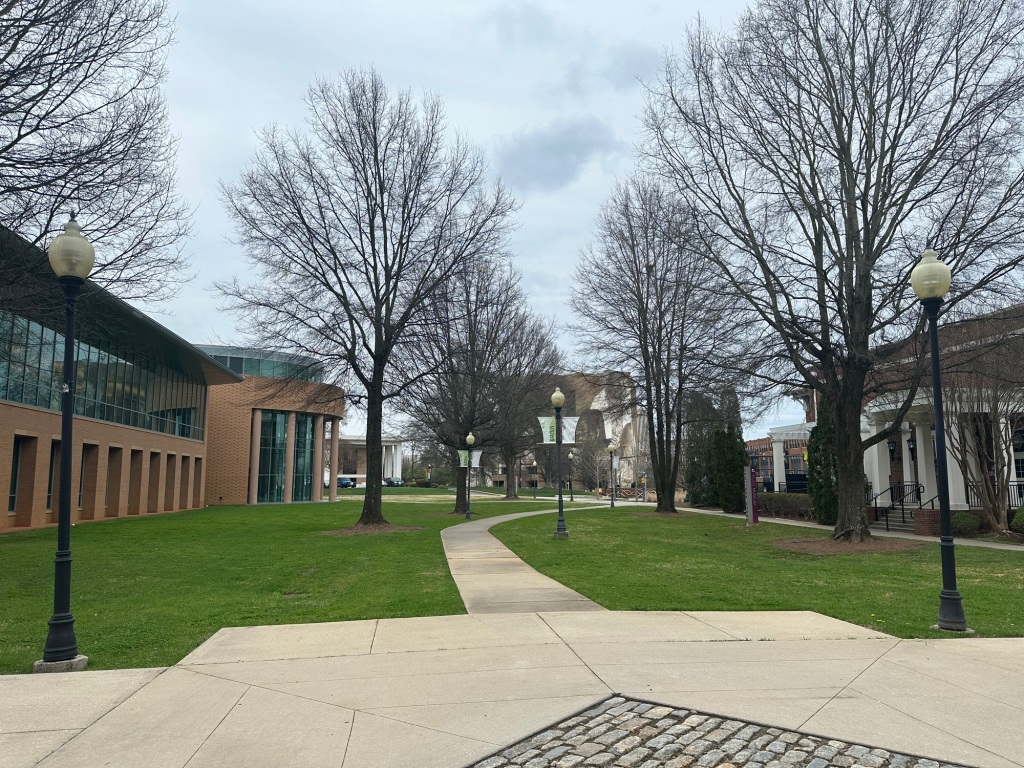Heritage Green

Heritage Green has not always been the Center for Human Enrichment it is today. The rich history dates back to the Civil War. The historical marker in front of the theater says it all. “Soldiers Rest”. Ladies’ Aid Association of Greenville was established July 19, 1861. Committees of women took shifts caring for sick and wounded soldiers on this site. Kind Greenville physicians helped the ladies in their efforts. In total disregard for politics, these patriots met the needs of both Confederate and Union soldiers. Many historians believe this hospital is the reason Greenville was spared total destruction when Union armies marched through near the end of the Civil War. I’m ashamed to say, I was ten-months-ago-years-old when I learned about this monument, even though I drive past it four million times a week.
The land now called Heritage Green was donated to the boys and girls academies by Vardry McBee (see this post). His only stipulation was that the lot always be used for educational and cultural purposes. Early tenants were Greenville Academies, 1820-1854; Greenville Womens College, 1855-1936; Womens College of Furman University, 1937-1961. During those years, Coca-Cola Bottling Company opened a plant on Buncombe Street in 1930.
Greenville was suffering from effects of the Great Depression when Coca-Cola built their two-story brick plant with ornate bracket and elegant lampposts. The plant included bottling, storage, refrigeration, 600 gallon glass-lined syrup tank, offices and a reception area, open to the public at no charge. It seemed a hopeful sign that things might be looking up for the town. Coca-Cola expanded their plant over the years.

Coca-Cola relocated, and in 1963 the City Council purchased the campus for $500,000 to build a cultural center. Some thirty-five years later, Alester Furman III bought an adjoining eight acres and sold most of the land to Philip Hughes’ Southern Commercial Development Company. Hughes gifted his acreage to build the Hughes Branch of the library. At that time, the main library was on North Main Street. In 1970, the Hughes Main Library opened at the corner of Academy and College Streets. It occupied that site until the current library opened in 2002. In 2009, The former library became The Childrens Museum of the Upstate. We could talk all day about TCMU – one of our favorites. But, this article is about the History of Heritage Green.
The Greenville Theater moved to Heritage Green in 1967. The director was Robert McLane, head of Speech, Art, and Drama at Greenville High School. This is significant because he taught Academy Award winning actress Joanne Woodward when she attended Greenville High. She came to Greenville Theater to play in “The Glass Menagerie”. Will Rogers and Leonard Bernstein also performed in The Greenville Theater.
The Greenville County Museum of Art moved to its’ new home on Heritage Green in 1972. It is “considered the premier American art museum in the South”. The Upcountry History Museum, operated by Furman University, opened in 2007 on Heritage Green. The museum was named a Smithsonian affiliate in 2015. Another one of our favorites. On any given day, you’ll find school buses parked along the street in front of Heritage Green. Students from all over the upstate visit these museums.
Hughes donated the only remaining Coca-Cola building to Bob Jones University. A satellite museum of the much larger one on campus, opened in 2008. The university wanted some of the priceless works to be displayed in a more well known site, closer to downtown. When that didn’t prove profitable, Bob Jones University deeded the building to Greenville County. The building was The Carolina Music Museum in 2017. In 2020,it became known as Sigal Music Museum.

Greenville County Museum of Art, Greenville Theater, Hughes Main Library, The Children’s Museum of the Upstate, Upcountry History Museum and Sigal Music Museum make up Heritage Green. These places provide educational and cultural experiences to residents and visitors. A Greenville County Council member once said, “The name Heritage Green harkens back to village green, a gathering place. We want it to be a place people want to be”.
This place certainly lives up to its’ name.
